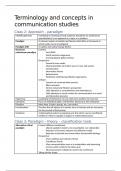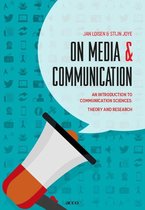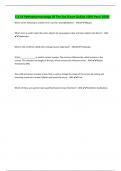Resume
Summary Needing help with (introduction to) communication studies? Here's a full list of the most important concepts and terms!
- Établissement
- Vrije Universiteit Brussel (VUB)
Needing help with (introduction to) communication studies? Here's a full list of the most important terms and concepts in the handbook used in the 1st bachelor of social sciences at vub! It's a clear summary: a table with the term/concept and a concise explanation.
[Montrer plus]





